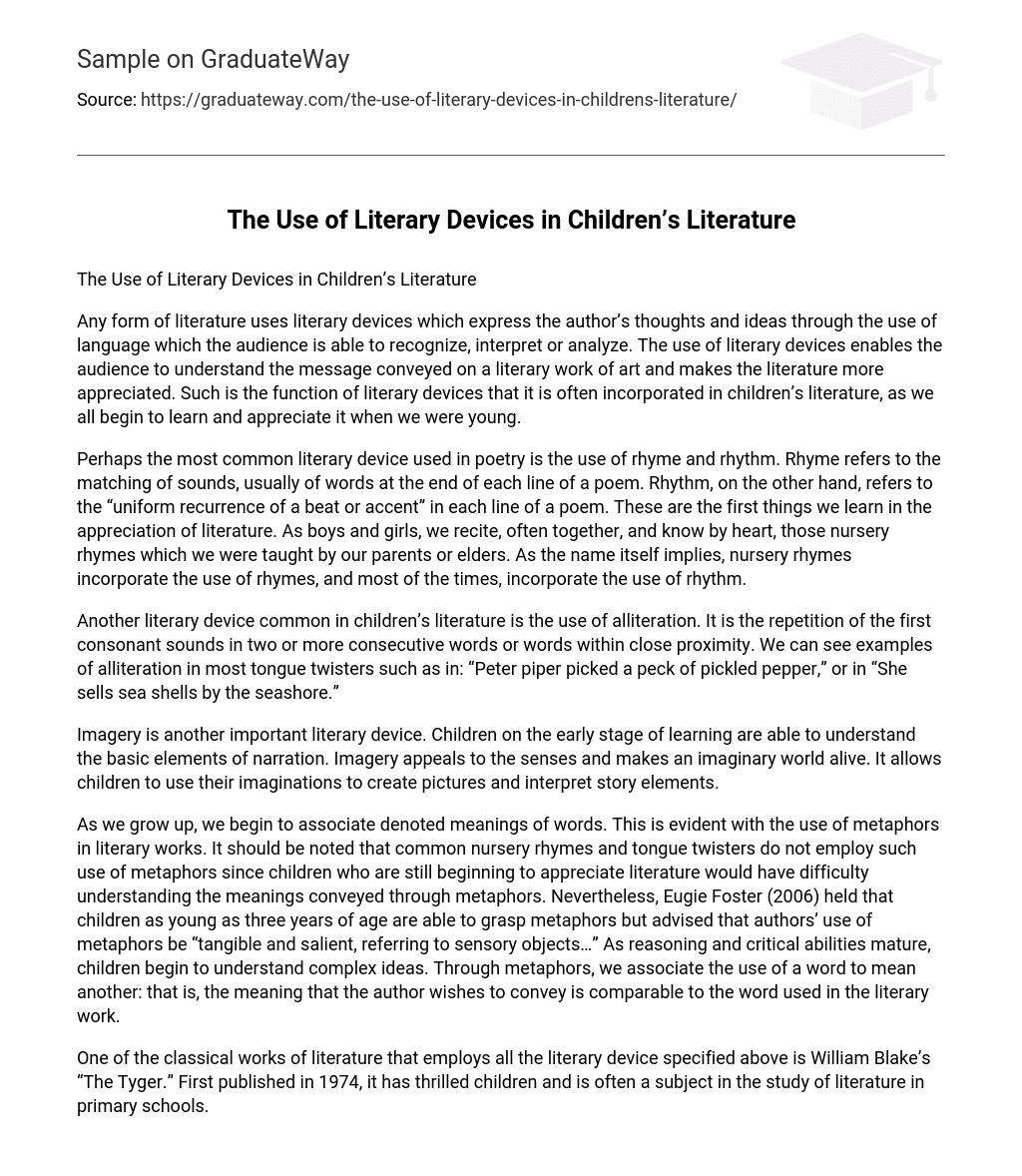Any form of literature uses literary devices which express the author’s thoughts and ideas through the use of language which the audience is able to recognize, interpret or analyze. The use of literary devices enables the audience to understand the message conveyed on a literary work of art and makes the literature more appreciated. Such is the function of literary devices that it is often incorporated in children’s literature, as we all begin to learn and appreciate it when we were young.
Perhaps the most common literary device used in poetry is the use of rhyme and rhythm. Rhyme refers to the matching of sounds, usually of words at the end of each line of a poem. Rhythm, on the other hand, refers to the “uniform recurrence of a beat or accent” in each line of a poem. These are the first things we learn in the appreciation of literature. As boys and girls, we recite, often together, and know by heart, those nursery rhymes which we were taught by our parents or elders. As the name itself implies, nursery rhymes incorporate the use of rhymes, and most of the times, incorporate the use of rhythm.
Another literary device common in children’s literature is the use of alliteration. It is the repetition of the first consonant sounds in two or more consecutive words or words within close proximity. We can see examples of alliteration in most tongue twisters such as in: “Peter piper picked a peck of pickled pepper,” or in “She sells sea shells by the seashore.”
Imagery is another important literary device. Children on the early stage of learning are able to understand the basic elements of narration. Imagery appeals to the senses and makes an imaginary world alive. It allows children to use their imaginations to create pictures and interpret story elements.
As we grow up, we begin to associate denoted meanings of words. This is evident with the use of metaphors in literary works. It should be noted that common nursery rhymes and tongue twisters do not employ such use of metaphors since children who are still beginning to appreciate literature would have difficulty understanding the meanings conveyed through metaphors. Nevertheless, Eugie Foster (2006) held that children as young as three years of age are able to grasp metaphors but advised that authors’ use of metaphors be “tangible and salient, referring to sensory objects…” As reasoning and critical abilities mature, children begin to understand complex ideas. Through metaphors, we associate the use of a word to mean another: that is, the meaning that the author wishes to convey is comparable to the word used in the literary work.
One of the classical works of literature that employs all the literary device specified above is William Blake’s “The Tyger.” First published in 1974, it has thrilled children and is often a subject in the study of literature in primary schools. It opens with the following stanza:
“Tyger! Tyger! Burning bright
In the forest of the night,
What immortal hand or eye
Could frame thy fearful symmetry?”
This opening stanza alone exhibits rhyme and rhythm, alliteration, imagery and metaphor. The first line obviously uses alliteration and, at the same time, a metaphor. Together with the second line, Blake stimulates the mind of the reader to imagine the tiger in a forest—hence, the use of imagery. The last words of the first two lines show the use of rhyme and the use of rhythm is also evident. In this opening verse, Blake compares the tiger’s fierceness to a burning presence in the forest. In the second stanza, Blake then compares the tiger’s eyes to some distant fire—a star—and he presents the tiger’s creator with wings, using both metaphor and imagery. In short, “The Tyger” incorporates the use of rhyme and rhythm, alliteration, imagery and metaphor to convey its message to the audience.
References
Blake, W. (1794). “The Tyger.”
Foster, E. (2006). “When the guidelines say ‘7-12’: The ages and stages of children’s literature.” Retrieved September 9, 2008 from http://www.writing-world.com/children/stages.shtml.





